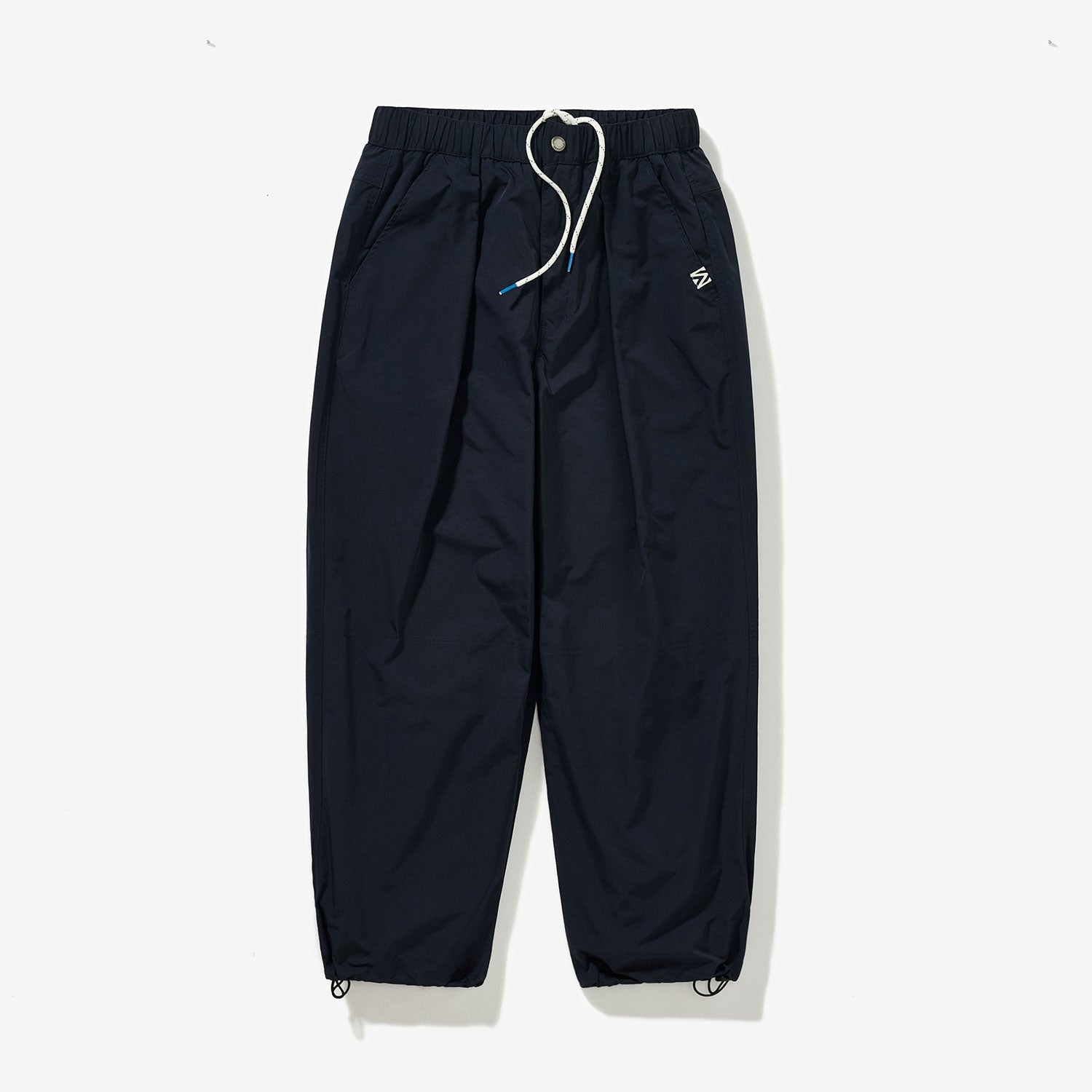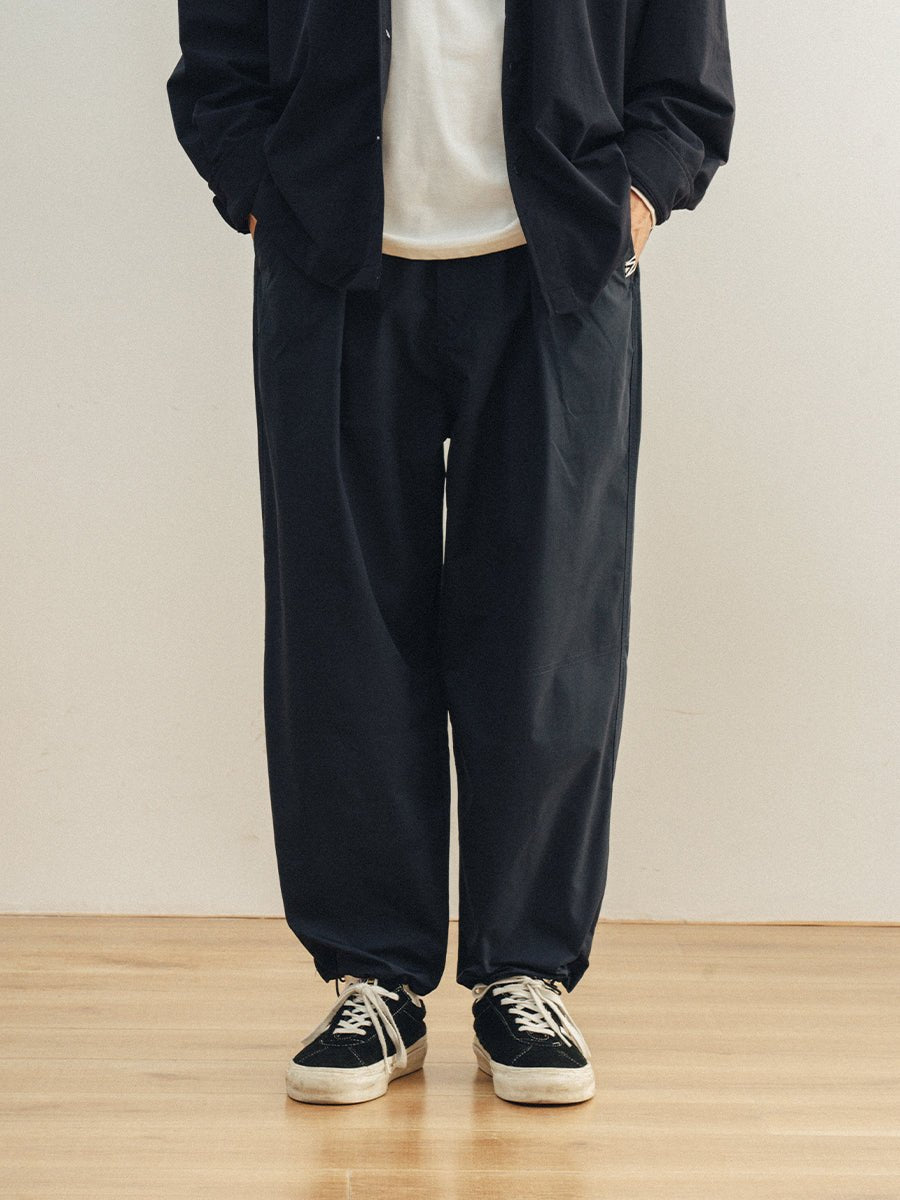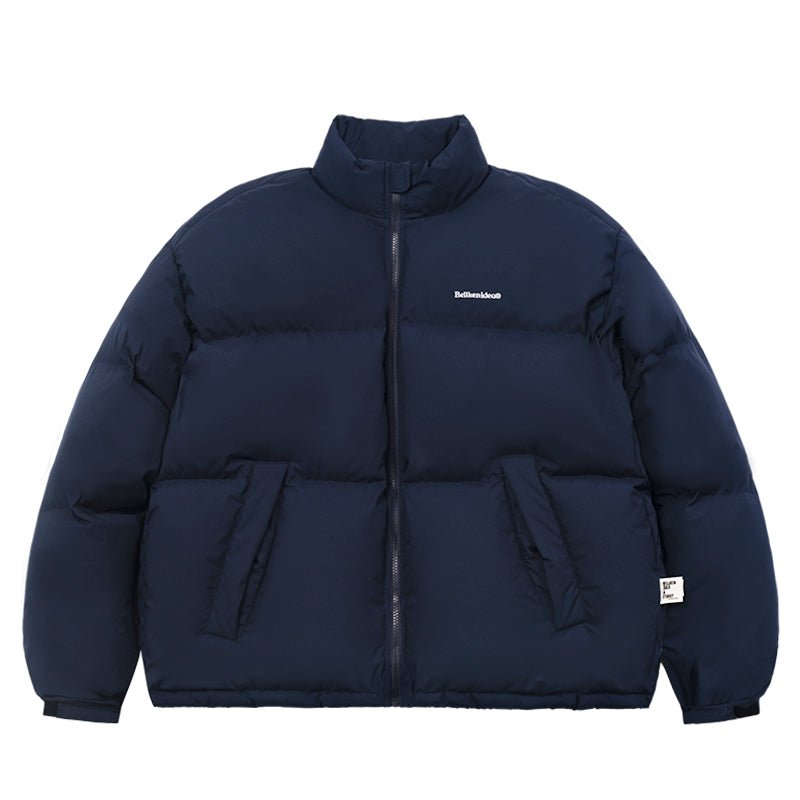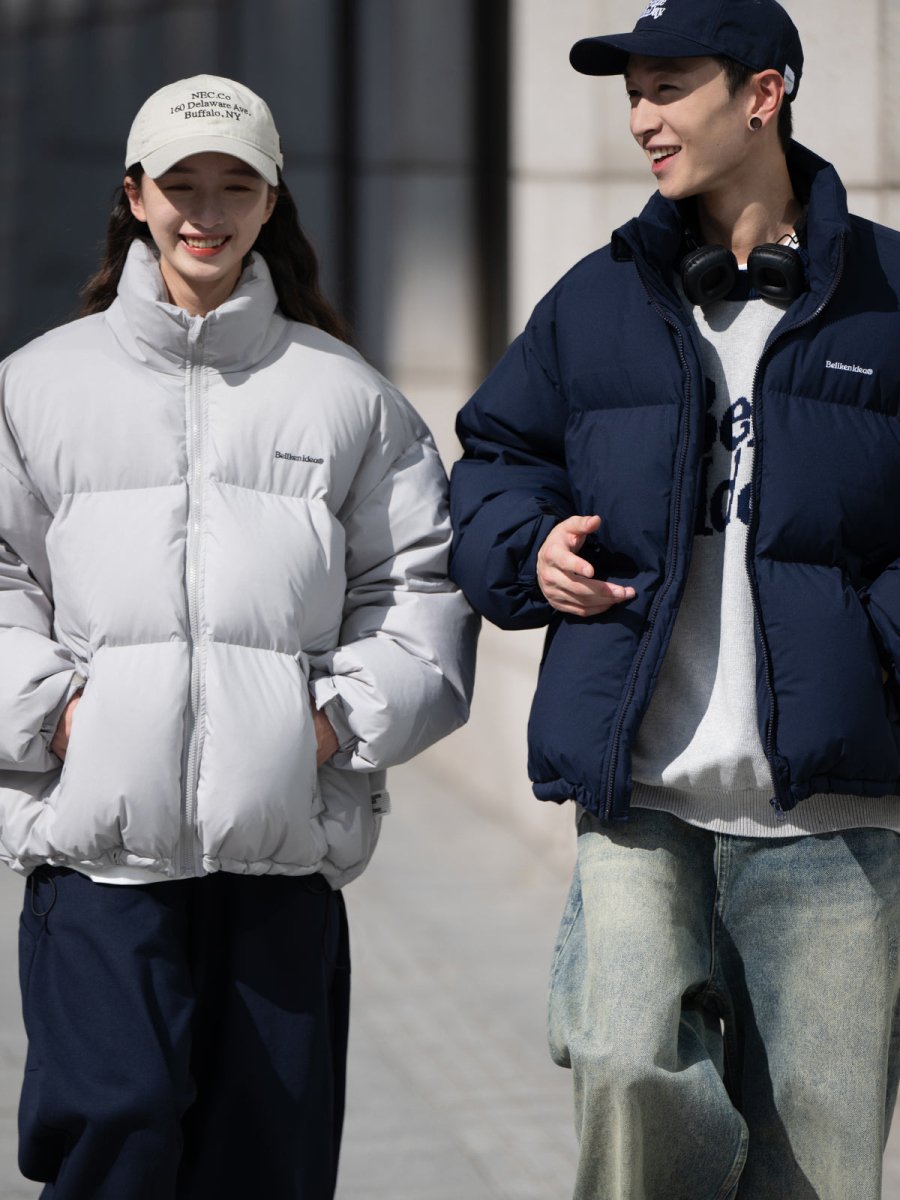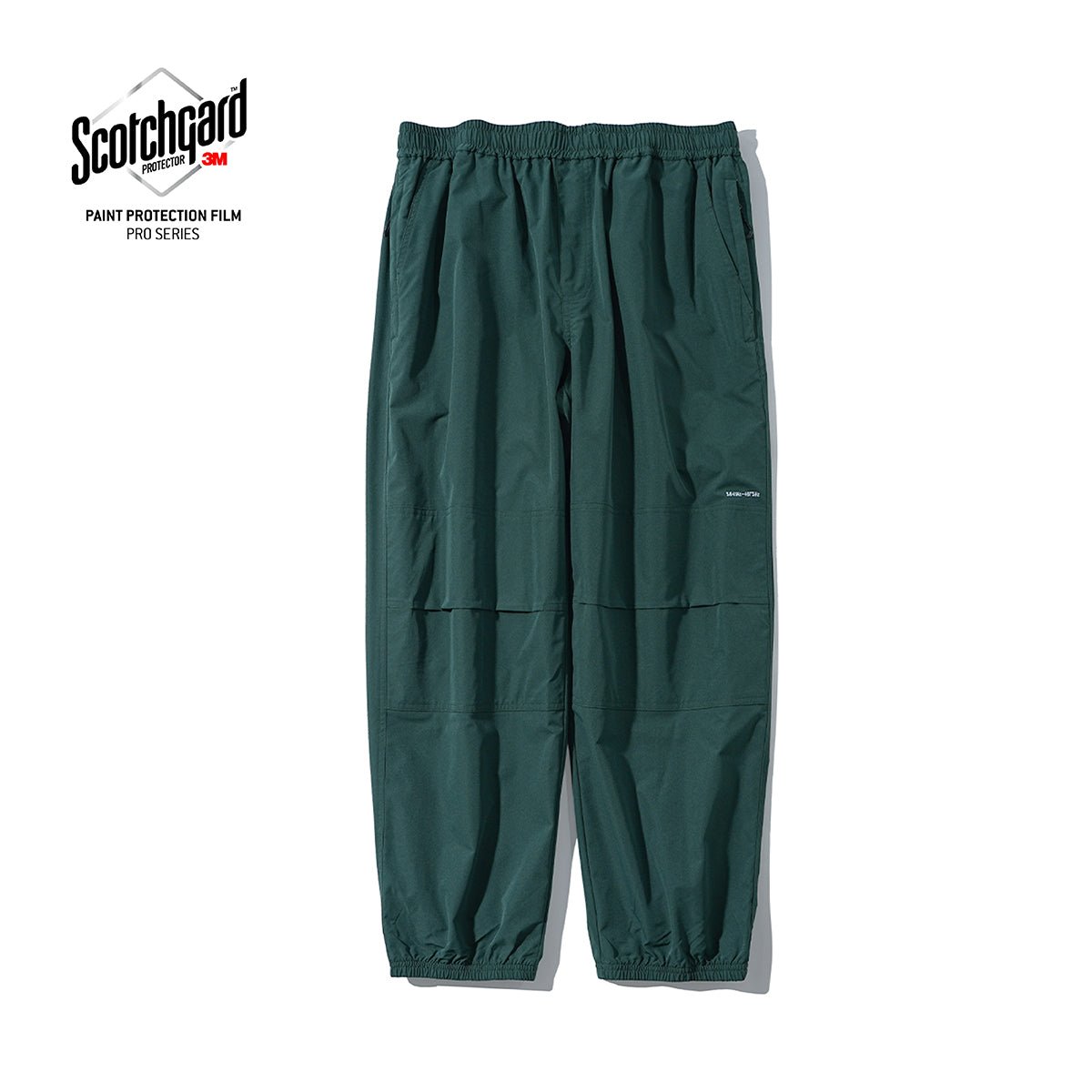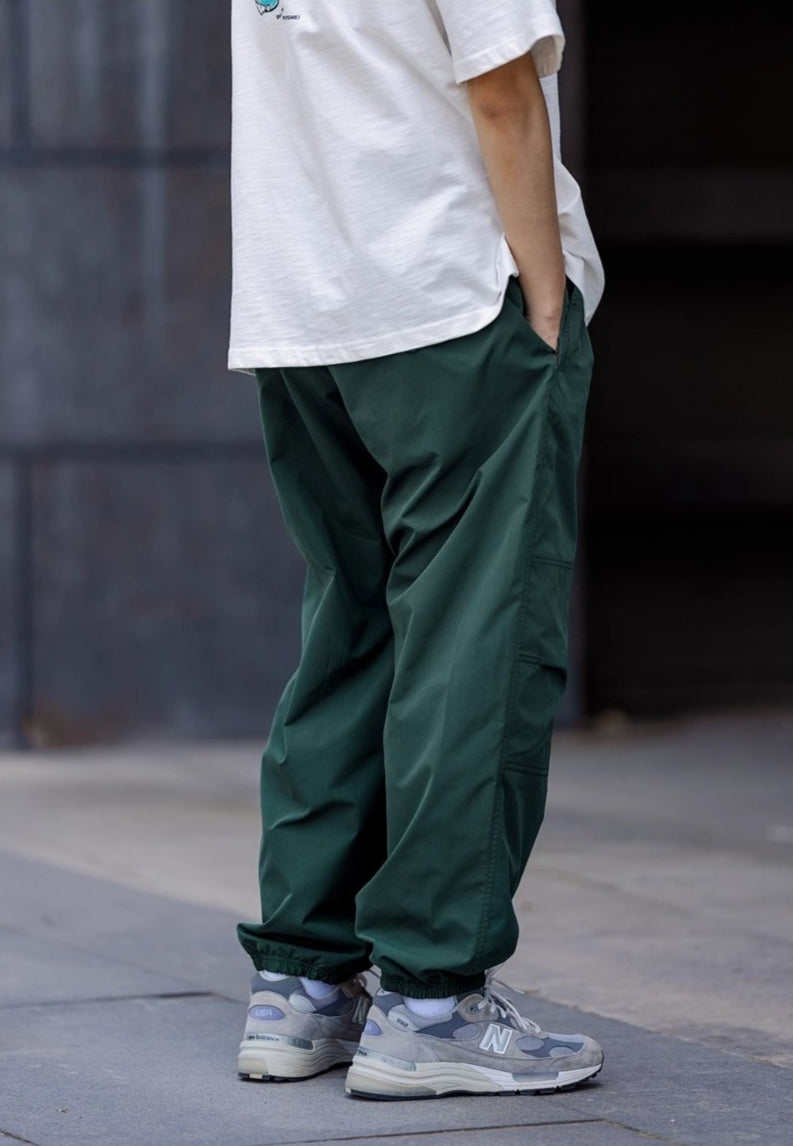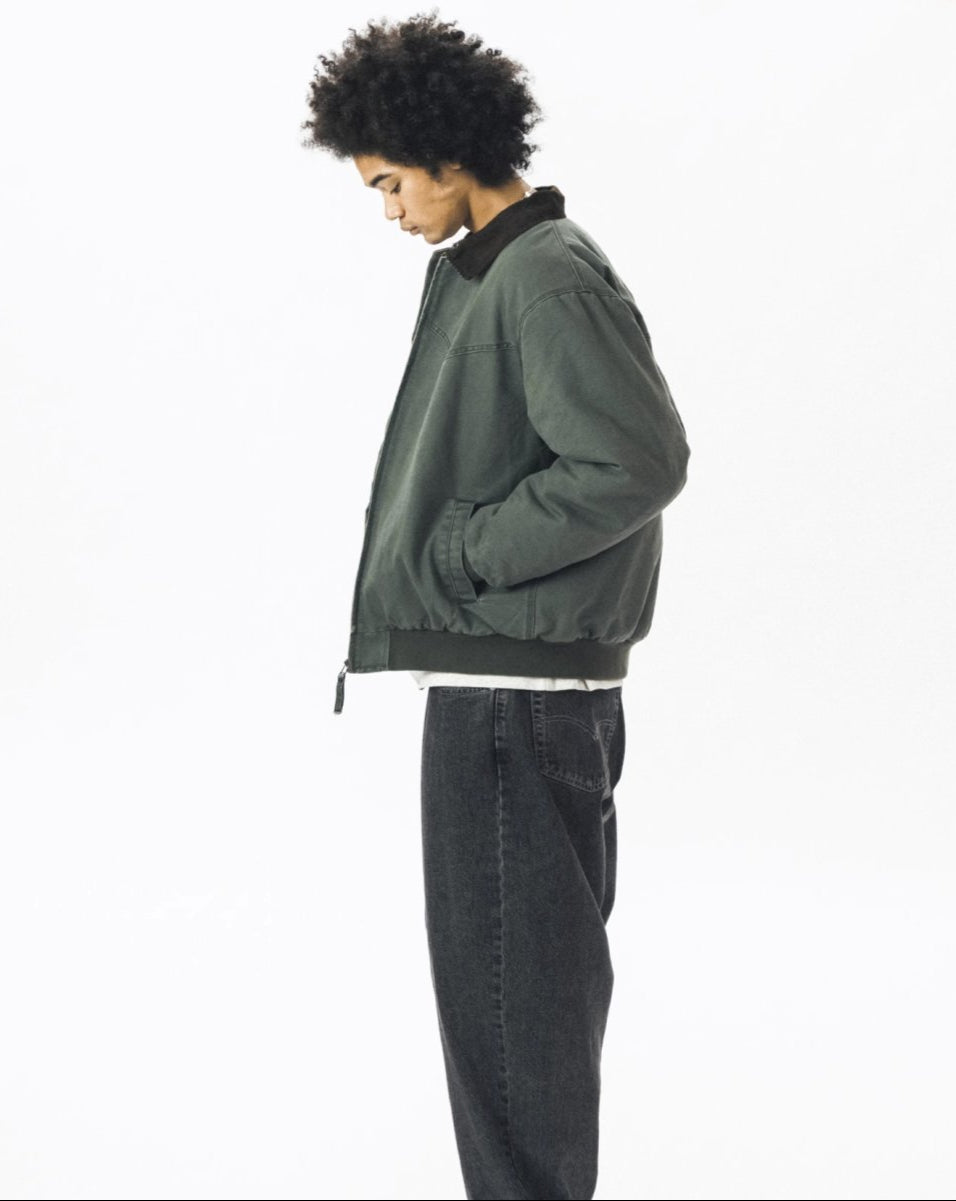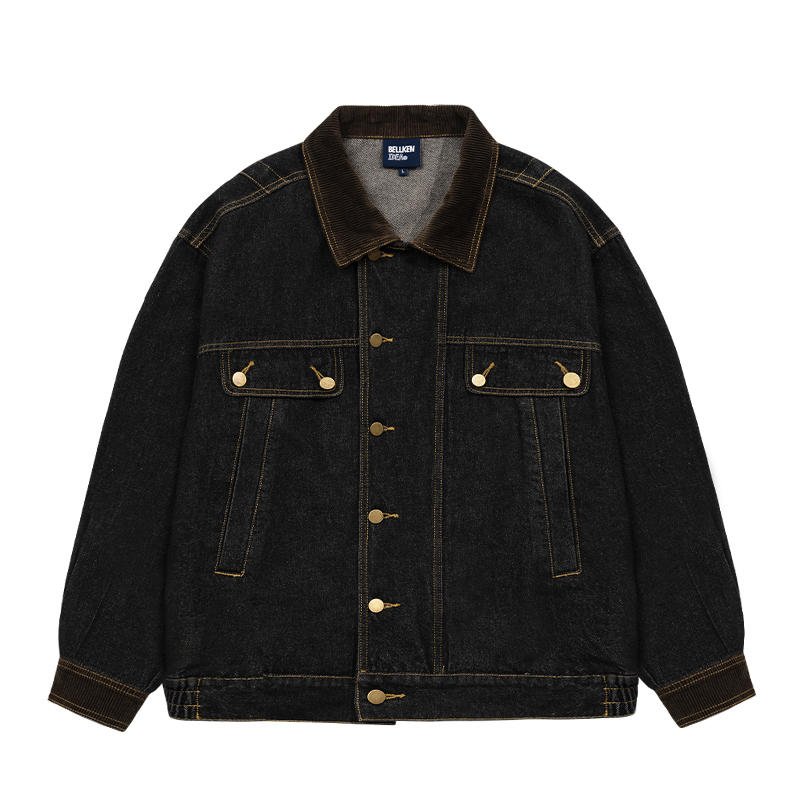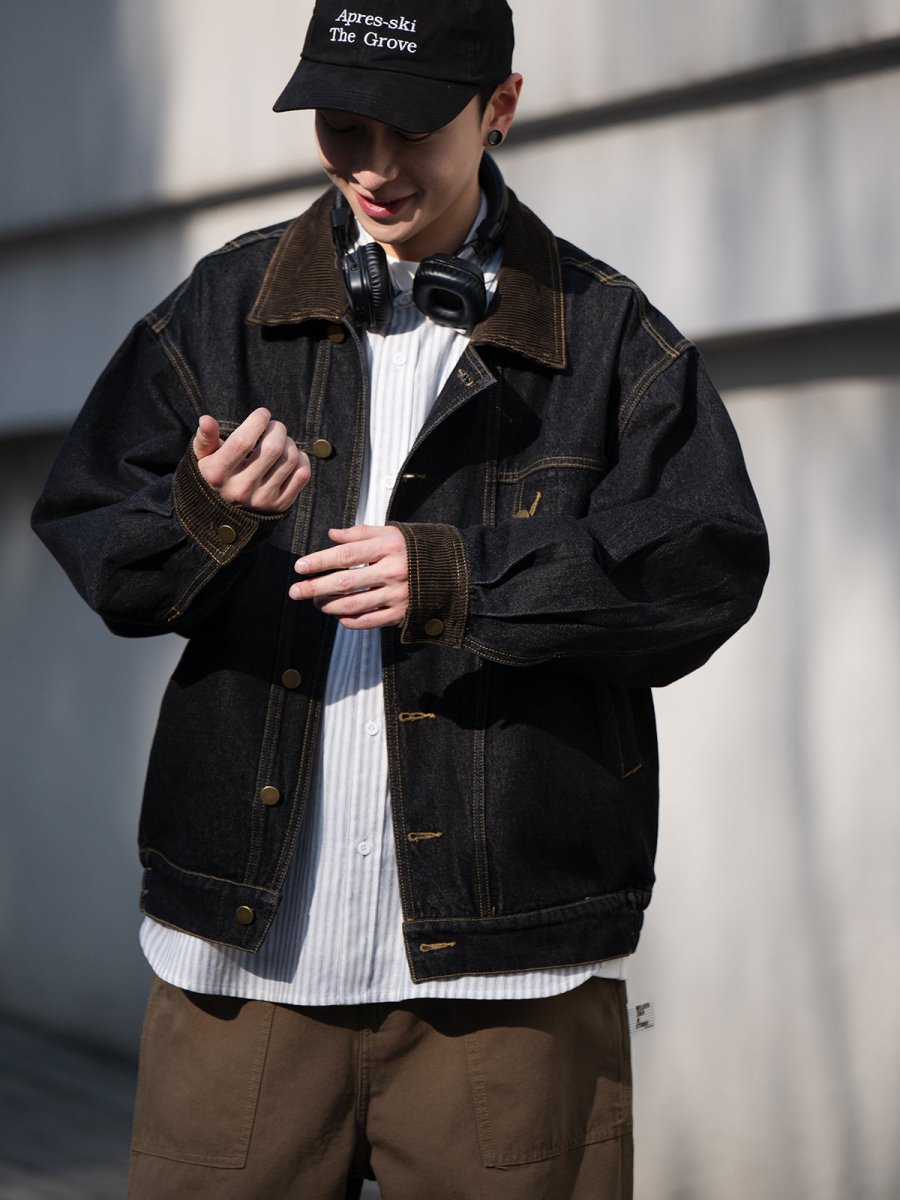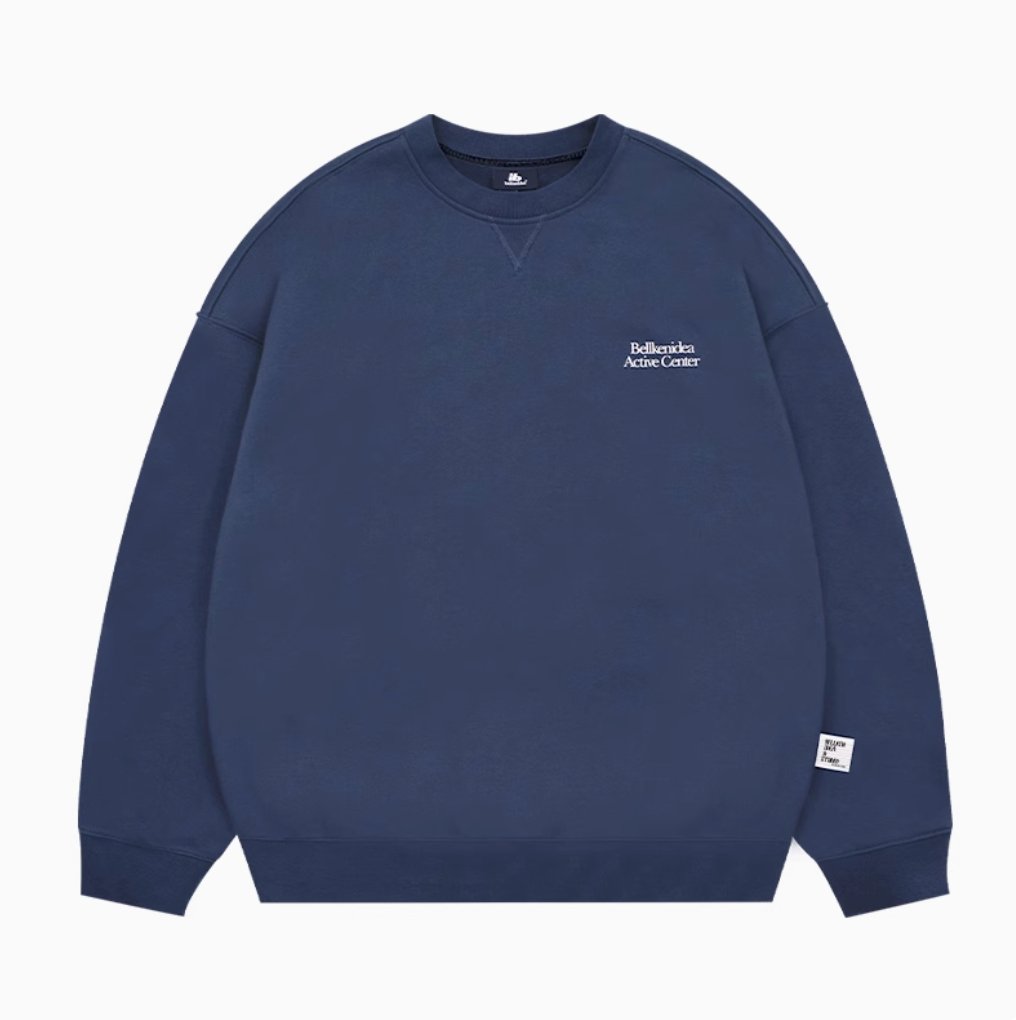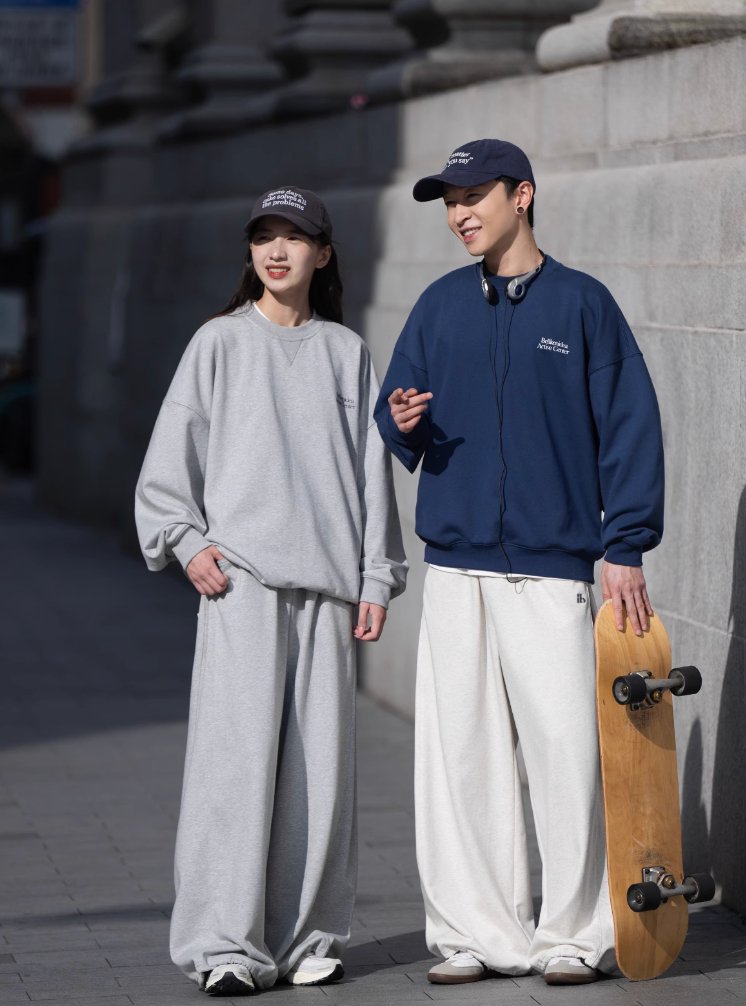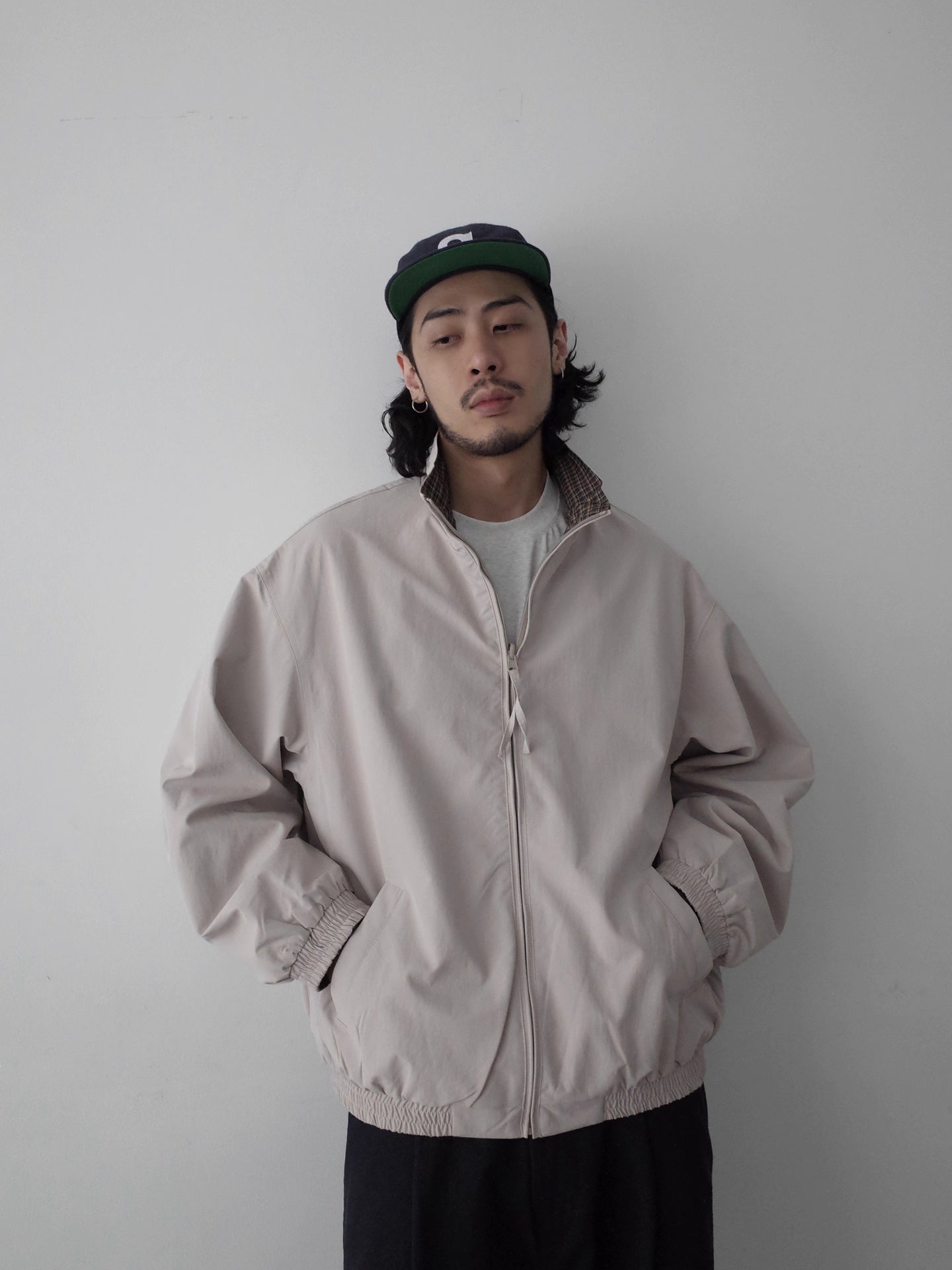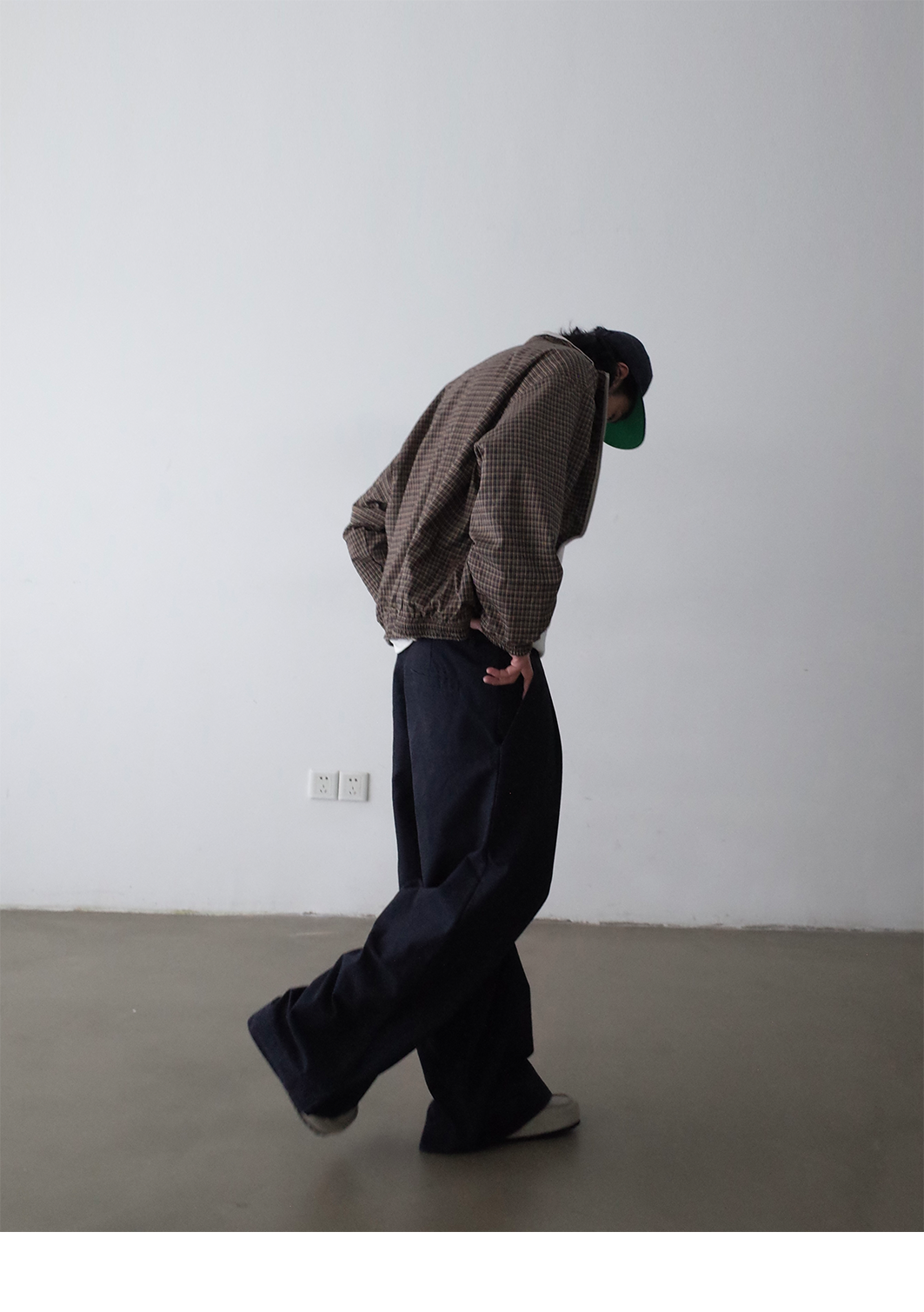Tokyo's March Outfits: Outfits for Early, Mid, and Late March Temperatures
Characteristics of Tokyo's Climate in March

March in Tokyo is a time of transition from winter to spring, and the temperature varies widely from day to day, making it easy to get lost in choosing what to wear.
While the mornings and evenings can be chilly, the days can feel warmer during the day. Understanding the characteristics of the weather during this time of year will give you hints on how to choose clothes that will keep you comfortable.
Average Temperature and Temperature Difference
The average temperature in Tokyo in March is about 8°C in the beginning of the month, about 10°C in the middle of the month, and gradually rises to about 12°C in the end of the month. However, it is not uncommon to see a temperature difference of around 10°C between daytime and morning/evening temperatures. For example, the temperature in the morning may be around 5°C, but during the day it may exceed 15°C. Such temperature differences require attention in terms of physical condition.
Because of the large fluctuations in temperature, it is important to wear clothing that is easy to put on and take off. Especially in early March, there are still remnants of winter, and cold days may continue. On the other hand, in late March, there are more days with spring-like warmth, but it can suddenly get cold, so be on your guard.
Weather Characteristics (Mostly sunny days? Rainy days?)
In March, Tokyo is relatively sunny, with sunny or cloudy days for about 60% of the month on average. However, with the arrival of spring, warm air flows in from the south, making the weather changeable. Especially in late March, the number of rainy days tends to increase due to the influence of a front.
March also brings strong southerly winds, known as the "first day of spring. Since the temperature drops on windy days, it is a good idea to have outerwear made of materials that are resistant to the wind. In addition, the amount of pollen in the air increases after mid-March, so hay fever sufferers need to choose clothing that takes countermeasures into consideration.
What to wear in Tokyo in early March

In early March, Tokyo still has the chill of winter.
The temperature difference between daytime and nighttime is large, so while layering is the basic rule, it is important to choose clothes that can cope with the rise in temperature during the daytime. This is also the time of year to start incorporating a few spring-like items into your wardrobe, while keeping your winter clothes as a base.
Average temperatures and key points of clothing
The average temperature in Tokyo in early March is around 8°C, but it can drop below 5°C in the morning and evening. Even during the daytime, the temperature may rise above 10°C (50°F) or not at all, so be sure to wear clothing that is easy to adjust to your body temperature. Basically, you can coordinate your clothes in the same way as in winter, but it is also a time to switch to slightly lighter outerwear.
The key to dressing is "layers that can be taken off and put on. It is best to choose an inner layer of heat-retaining material such as HEATTECH and layer a light knit or cardigan over it. For outerwear, lighter down or wool coats work better than winter down. In addition, accessories such as scarves and stoles are still necessary.
Recommended Codes (e.g., for 10 degrees Celsius)
Days with temperatures around 10 degrees Celsius are the temperature range where many people feel chilly. As a recommended coordinate for such days, a long-sleeved top and cardigan over a functional inner layer such as HEATTECH, and a light outer layer such as a trench coat or quilted jacket is a comfortable style.
Specifically, a HEATTECH cut-and-sew with a light knit and denim or casual pants for bottoms will allow easy movement and ensure warmth. Boots or sneakers are recommended for the feet, and a scarf or stole as accessories will help prevent chills in the morning and evening. Spring-like brightCOLORwill make the outfit look and feel like spring.
Outerwear that can be used in early season
The best outerwear for early March is of an intermediate weight, neither too thick nor too thin. Specifically, middle down, trench coats, quilted jackets, and wool coats work well. These are all items that can easily regulate body temperature and cope with the cold temperatures of spring.
Trench coats are particularly recommended. Since it is made of windproof material, it is safe even on chilly or windy days. It is also a practical outerwear that can be utilized not only in March but also until April, as it retains heat while giving a spring-like impression. For colors, choose not only the standard beige, but also spring-like pastel colors for a seasonal look.
If you choose a wool coat, a slightly lighter type is recommended over a winter heavy one. Since it can get cold, especially in the evenings, warmer outerwear is still a necessity in early March.
What to wear in Tokyo in mid-March

In mid-March, Tokyo begins to feel the arrival of spring in earnest.
Although mornings and evenings can still be chilly, daytime temperatures are often pleasant, and it is a time when clothing is shifting from winter to spring.
This is the time of year when coordinating a combination of light outerwear and spring items is a great way to dress for the season.
Average temperatures and tips on what to wear
The average temperature in Tokyo in mid-March is about 10°C (50°F), and the temperature rises to around 15°C (59°F) during the day. However, mornings and evenings can still be chilly, so it is important to choose clothing that can cope with the temperature difference. Basically, consider spring clothes as a base, but do not forget to take measures to protect yourself from the cold.
The key to dress is to "mainly wear spring items and prepare a cloak that can be taken off and put on. For an inner layer, choose a lightweight cut-and-sew or shirt and layer a knit or cardigan over it. For outerwear, it is time to switch from winter wear to lighter spring wear. Small accessories such as scarves and stoles are also useful to protect against the cooler mornings and evenings.
Recommended Codes (e.g., for 15 degrees Celsius)
When the temperature reaches around 15 degrees Celsius, you can enjoy spring-like coordination. On such days, we recommend wearing a cardigan or light jacket over a long-sleeved shirt or cut-and-sew base. For bottoms, incorporate spring-like items such as denim, chinos, and skirts.
Specifically, a trench coat or denim jacket worn over a classic white shirt and denim is a great seasonal look. For footwear, choose lightweight shoes such as sneakers or loafers for a spring-like look. Bright pastel colors and spring-like floral prints will give a sense of the season and make the coordination more colorful.
Clothing that can be used mid-season
Various types of woven fabrics are useful in mid-March. The main ones are trench coats, denim jackets, cardigans, and light outerwear. These are convenient items that are easy to put on and take off and can cope with changes in temperature.
Trench coats, in particular, are a spring staple and are one of the most useful items at this time of year. Windproof and able to handle a little rain, it is suitable for the changeable March weather. Denim jackets are also an indispensable item for casual spring outfits, and can be simply thrown over a shirt or cut-and-sewn for a cozy look.
Cardigans are another important piece of clothing. From lightweight to medium-weight, you can choose according to the temperature of the day. They are also useful for adjusting the temperature in the office, so it is a good idea to have one in your bag. Choosing bright or pastel colors, especially those that are spring-like, will make the transition from winter to spring smoother.
What to Wear in Tokyo in Late March
In late March, Tokyo experiences full-blown spring weather. Average temperatures also rise, and daytime temperatures are often pleasant. While spring clothes are the main focus during this time of year, it is comfortable to be aware of layering styles that can cope with sudden temperature changes. This is the season to enjoy spring-like outfits.
Average temperatures and key points of clothing
The average temperature in Tokyo in late March is about 12°C (54°F), with temperatures rising to nearly 20°C (68°F) during the day. However, mornings and evenings can still be chilly, so it is important to choose clothing that takes temperature differences into consideration. Basically, it is advisable to think mainly of spring clothes and prepare a piece of cloak for mornings and evenings.
The key to dress is to "use spring clothes as a base and utilize a lightweight cloak. It is best to choose a long-sleeved or three-quarter-sleeved top as an inner layer and combine it with a cardigan, jacket, or other lightweight cloak. Heavy outerwear is no longer necessary; lightweight, easy-to-carry items are convenient. It is also time to switch materials from thick knits to lighter ones.
Recommended Coordinates (e.g., when the temperature is 20 degrees Celsius)
When the temperature is around 20 degrees Celsius, you can fully enjoy the light, spring-like style. On such days, we recommend wearing a light cardigan or light jacket over a cut-and-sew or blouse as the main style. For bottoms, incorporate spring-like items such as denim, chinos, and skirts.
Specifically, a brightly colored blouse with denim or a one-piece dress with a cardigan are great styles with a sense of the season. Choose light, spring-like footwear such as loafers, pumps, or sneakers. Accessories and bags are also bright.COLORaccessories and bags with a bright color will give a more spring-like impression.
Tops that can be worn alone in late season
In late March, tops that can be worn alone begin to come into play. Specifically, long-sleeved blouses, shirts, cut-and-sewns, and knitwear fall into this category. Materials such as cotton, linen, and lightweight knitwear appropriate for spring will give a sense of the season.
Particularly recommended are tops with three-quarter sleeves. They are lighter than long-sleeved ones, but also provide protection against the cold when the weather is still chilly. Shirt dresses and blouse dresses are also useful as one-piece items. Colors range from basics such as white and beige to pastel colors, floral prints, and other spring-like designs.
Material selection is also important. Natural materials such as cotton and linen are breathable and comfortable on sweaty days. Also, on slightly chilly days, light knits and cut-and-sew fabrics will keep you warm. Since they are often worn alone, it is important to choose a design andCOLORand use of materials to create a bright, spring-like impression.
What to Wear in Tokyo in March by Scene
You may spend time in Tokyo in March for a variety of occasions. From travel, work, and dates to graduation and entrance ceremonies, it is important to choose the right attire for each scene. Here are some recommended coordinates for each scene. Keep in mind the key points of attire that take into account the characteristics of each scene and climatic conditions to ensure a comfortable stay.
Recommended Clothing and Personal Belongings for Travel
When traveling to Tokyo in March, it is important to choose comfortable clothing that takes into account the long hours of walking required for sightseeing. Basically, a layered style is recommended according to the temperature of the time of year. In particular, shoes that are comfortable to walk in will reduce travel fatigue.
Specifically, a casual knit or cut-and-sew style with jeans or chinos and a trench coat or light jacket will work well. For footwear, cushioned sneakers are useful. In addition, a hands-free bag such as a backpack will free up both hands and make sightseeing easier.
As for personal belongings, a folding umbrella, sunscreen, and a light stole are useful. Stoles in particular can be used to protect against temperature differences between morning and evening, and to protect against air-conditioning in museums and other places. Also, if you suffer from hay fever, don't forget to bring a mask and other protective items.
Business attire
For business occasions in March, try to dress neatly while coping with the change of seasons. Winter suits are still acceptable in early March, but from mid-March onward, it is best to gradually transition to spring attire.
For women, a jacket and skirt or pants set-up with a blouse or light knit as an inner layer is recommended. For men, it is time to switch suit materials from winter to spring. Especially towards the end of the season, spring-like suits in brighter colors and light grays will be in use.
Although temperatures in offices are often regulated by air conditioning, it is a good idea to use jackets and cardigans that are easy to take off and put on in preparation for the difference in temperature from the outside when commuting to work. In addition, incorporating spring-like accessories will help create a sense of the season.
Recommended Outfits for Dates
For a date in March, the key is to choose clothes that are functional while keeping in mind the spring-like atmosphere. This is especially the season for outdoor activities, so be sure to coordinate with the weather and temperature changes.
For women, a feminine coordinate such as a dress or blouse and skirt with a trench coat or cardigan is a great style. For men, a shirt or knit with chinos or jeans and a casual jacket or trench coat makes a good impression.
It is a good idea to adjust your attire depending on the location and content of the date. For example, if it is a cherry blossom viewing date, choose clothes that can get dirty and bottoms that are comfortable to sit in. For a restaurant date, dress up a little and add some spring colors and accessories to make it feel special.
Best Attire for Hanami
Hanami season in Tokyo begins in late March. Since many people spend a lot of time outdoors, it is important to choose clothes that are comfortable to move in while providing protection against the cold. In particular, choose bottoms that are stain-resistant and easy to sit on for hanami, where people often sit on the ground.
Specifically, a casual top with denim or chinos and a trench coat or cardigan is an easy style to use. For women, pants style is more practical and easier to move in than skirts. Sneakers or other footwear that is easy to walk in are recommended.
In addition, even if it is warm during the day at a hanami, it may suddenly cool down in the evening or later. Foldable blankets and large-size scarves are useful. In addition, don't forget to bring anti-hay fever items. Spring-like pastel colors and floral patterns will add a sense of the season to your outfits.
Appropriate Attire for Graduation and Entrance Ceremonies
March through April is the time of year when graduation and entrance ceremonies are held. For these formal occasions, dress in a neat and polite manner. However, it is also important to be able to regulate your body temperature easily during long ceremonies.
For women, ceremonial suits, dresses, and skirt suits are standard.COLORare basic colors such as navy blue, gray, and beige are safe. For the entrance ceremony in particular, brighter colors will give a spring-like impression. Accessories should be modest, and bags and shoes should be similar.COLORand shoes in the same color family to create a cohesive impression.
For men, a dark suit with a shirt and tie is the basic style. If you are attending a children's ceremony in particular, it is a good idea to choose a brighter tie to avoid looking too businesslike. Also, since it is the change of season, it is a good idea to have a coat ready.
What to Wear in Tokyo in March (by Gender and Age)
The appropriate attire for Tokyo in March varies by gender and age group. Here are some tips for choosing the right attire for your lifestyle and preferences, with recommended coordinates for women and men in their 20s through 50s.
For Women
For women, fashion preferences and ways of dressing differ depending on their age. Here we will introduce recommended March outfits for women from their 20s to 50s. Enjoy spring in style by coordinating your outfits in consideration of age-specific trends and lifestyles.
For 20s
Women in their 20s are relatively trend-conscious, and a casual yet seasonal style is recommended for March attire. Match classic outerwear such as trench coats and denim jackets with seasonal tops to create an impression that is unique to this year's season.
Specifically, coordinating an oversized knit with skinny denim or a flared skirt with a simple top will give a youthful look. Spring pastels and vivid colors will give a fresh impression. Also, wearing shoes that are easy to walk in, such as sneakers or flat shoes, will ensure ease of movement.
The use of accessories and small objects is another strength of 20-somethings. Large earrings, necklaces, and patterned scarves can be used to accentuate the coordinated look.
For 30s
For women in their 30s, we recommend a style that strikes a balance between trends and basics. Ideally, they should coordinate with a combination of elegance and casualness that can be used for various occasions, including work and private life.
Specifically, a clean shirt or blouse with tapered pants and a trench coat or collarless jacket looks mature. If skirts are chosen, knee-length flared skirts or tight skirts give an elegant impression. For colors, basic colors such as beige, navy, and gray are the base colors, with a hint ofCOLORA bright, spring-like color can be used as a base color to create a sophisticated impression.
Use accessories in an elegant way that is appropriate for people in their 30s. Choose simple but textured bags and shoes, and accessories that are understated but have a strong presence.
For 40s to 50s
For women in their 40s to 50s, we recommend choosing quality items and coordinating them with an elegant and relaxed look. It is wonderful to choose designs that cover the body shape but still give a feminine look.
Specifically, we recommend flared skirts, wide pants, and other silhouettes that look elegant while covering the body shape. For tops, choose items with a material feel, such as a beautiful blouse, knit, or jacket, to create a sense of luxury. For outerwear, classical designs such as trench coats and Chester coats give an intellectual impression.
For colors, use subdued colors such as navy, glaze, and beige as a base color, and add a subtle touch of colorful accessories.COLORSpring-like pale tones can be used as a base color to create an elegant impression. For accessories, texture is important, and leather bags, shoes, and pearl and silver accessories will make women in their 40s and 50s look beautiful.
For Men
For men, too, the coordination that suits them differs depending on their age. Here are some recommended March outfits for men in their 20s to 50s. Enjoy clean and tasteful spring fashion with styling appropriate for each age group.
For 20s
For men in their 20s, a casual and trendy style is recommended; for March attire, a casual top paired with a denim jacket, bomber jacket, or other seasonal outerwear will make you look young.
Specifically, it is easy to use a hoodie or sweatshirt with skinny denim, or a T-shirt with chinos. For colors, basic colors such as black and navy are used as the base color, with a hint ofCOLORVivid colors can give a youthful impression. Sneakers are the key to coordination, so it is best to choose sneakers with a good design.
Also, by adding a hat such as a knit cap or cap, and a casual bag such as a backpack, you can create a more 20s style.
For 30s
For men in their 30s, we recommend a well-balanced style that is neither too casual nor too formal. The key is to choose items that make it easy to switch between work and private life.
Specifically, a shirt or knit with chinos or denim and a trench coat or tailored jacket looks mature. The color scheme should be based on subdued colors such as navy, gray, and beige, with a hint ofCOLORA sophisticated impression can be created by adding a spring-colored item as an accent to a base color of navy, gray, or beige.
For shoes, choose leather shoes or leather sneakers that are not too casual to create an elegant impression. Also, accessories such as a bag and a watch will upgrade the overall coordination.
For 40s to 50s
For men in their 40s to 50s, we recommend a relaxed style centered on basic items of good quality. The key is to choose items that are not too flashy in design, but still offer a sense of quality in materials and tailoring.
Specifically, for casual occasions, a high-quality knit or shirt paired with chinos or clean denim, and a jacket or stainless steel collared coat will give the impression of a mature, relaxed style. For colors, use a base color of navy, brown, gray, or other subdued tones, and add bright spring-like colors with accessories or innerwear for a classy finish.
Shoes should be mainly leather shoes, with casual yet elegant designs such as loafers and driving shoes for holidays. Small accessories such as scarves and scarves made of high quality materials are also useful to regulate the temperature. 40s and 50s have already established their own style, so choosing silhouettes and materials that suit them rather than following trends should be a priority.
What to wear in Tokyo in March [by temperature
In Tokyo in March, temperatures vary widely from day to day, so it is important to choose clothing that is appropriate for the day's temperature. Here are some recommended outfits by temperature. Please check the morning weather forecast for the maximum and minimum temperatures for the day and use it as a reference for choosing appropriate clothing.
Clothing for temperatures below 10 degrees Celsius
On days when the temperature is below 10 degrees Celsius, you can still feel the cold remnants of winter. On such days, dress with an emphasis on keeping warm. Basically, coordinate with winter clothes, but you can add a sense of the season by incorporating a few spring-like items.
Specifically, we recommend wearing a heat-retaining inner layer such as HEATTECH and layering a long-sleeved top and a knit or sweater over it. For outerwear, choose down jackets, wool coats, lined trench coats, and other items that keep you warm. For bottoms, thick denim or corduroy pants, wool pants or skirts are warm.
Accessories are also important for protection against the cold. Utilize scarves, stoles, gloves, and other small items that keep your neck and hands warm. For feet, use thick socks and choose shoes that cover the ankles, such as boots or sneakers, to keep the feet warm. For color, use the dark tones of winter clothes as a base, and incorporate spring-like accent colors in accessories and some items to create a sense of the season.
Clothing for 10 to 15 degrees Celsius
On days when the temperature is between 10 and 15 degrees Celsius, the mornings and evenings are chilly but the days are relatively comfortable. On these days, layering style is best, and choose clothes that can be taken off and put on as the temperature changes.
Specifically, a long-sleeved cut-and-sew or shirt as a base, a cardigan or light knit, and a trench coat or light jacket are recommended. For bottoms, choose spring-like items such as denim, chinos, or skirts. Thick tights or leggings will keep you warm even in a skirt style.
For accessories, a scarf or stole to keep your neck warm is useful. For footwear, choose loafers, sneakers, short boots, or other shoes that work well for the changing seasons. Colors are spring-like, such as bright beige, gray, and pastel colors.COLORIt is a good idea to incorporate spring-like tastes. Bringing spring colors, especially in outerwear and tops, will give a bright impression to the entire coordination.
Clothing for 15 to 20 degrees Celsius
When the temperature reaches 15 to 20 degrees Celsius, many days feel like spring. On these days, while considering spring clothes as the main attire, choose clothes that are prepared for the cooler morning and evening temperatures.
Specifically, it is advisable to prepare mainly spring-like tops such as cut-and-sewns, blouses, and shirts, as well as lightweight outerwear such as light cardigans, jackets, and denim jackets. For bottoms, denim, chinos, skirts, wide pants, and other spring-like silhouettes work well.
For accessories, it is a good idea to have a scarf or lightweight scarf for morning and evening use. For footwear, choose light, spring-like shoes such as loafers, pumps, or sneakers. It is a good idea to actively use brighter tones and pastel colors to create a fresh, spring-like impression. Floral prints and spring-like patterns are also easy to incorporate in this temperature range.
Dress for temperatures above 20 degrees Celsius.
When the temperature rises above 20 degrees Celsius, some days feel like early summer. On these days, the key is to think mainly in terms of spring clothes and to choose clothing with heat protection in mind.
Specifically, think mainly of items that can be worn alone, such as short-sleeved or three-quarter sleeve tops and light blouses or shirts. In case of sudden temperature changes, it is a good idea to have a lightweight piece of clothing such as a thin cardigan or jacket. For bottoms, lightweight items such as denim, lightweight pants, skirts, and dresses work well.
The choice of material is also important. Choose breathable materials such as cotton, linen, or rayon for comfort on sweaty days. For footwear, choose light shoes such as pumps, sandals, or sneakers. Colors should be based on light tones such as white and beige, and incorporate spring-like designs such as vitamin colors and floral prints. Hats and sunglasses to protect against ultraviolet rays are also essential from this temperature range.
Points to keep in mind when choosing clothing in Tokyo in March
In Tokyo in March, it is important to choose clothing that takes into account a variety of environmental factors in addition to the changing climate. Here are some points to keep in mind in order to stay comfortable, including measures against hay fever, cold temperatures, and rain. By following these tips, you will be able to spend a comfortable time in Tokyo in March.
Measures against hay fever
Tokyo in March is the time of year when the amount of airborne pollen is at its highest. Hay fever sufferers can alleviate their symptoms by taking measures to prevent pollen from sticking to their clothing. It is advisable to wear clothes made of materials that do not easily catch pollen and that, even if they do, are not easily noticeable.COLORIt is important to choose clothing that is resistant to pollen and that does not show when it does stick to the clothing.
First, avoid materials that easily catch pollen. It is best to avoid wool, fleece, and other raised materials this time of year, as they tend to trap pollen. Instead, choose outerwear made of nylon, polyester, or other materials with smooth surfaces, which are less likely to attract pollen and easier to dispel.
COLORare darker, such as navy or black, rather than brighter colors that are less likely to show pollen.COLORare less likely to show pollen adhesion. Masks, sunglasses, and hats are also effective measures against hay fever. In particular, a wide-brimmed hat and sunglasses with side guards will prevent pollen from sticking to the face.
When returning home, it is also important to remove pollen from outerwear at the entrance with a brush or adhesive tape. It is also recommended to install a special coat hook at the entrance to prevent pollen from being brought indoors.
Measures against cold temperatures
In Tokyo in March, there is a large daily temperature difference, and even though the mornings and evenings are cold, the days are often warm. The key to staying comfortable is to choose clothing that can cope with this difference in temperature.
The basic rule is "layering. Starting with a light inner layer, layer up with cut-and-sewns, shirts, cardigans, and jackets, so that you can take them on and off as the temperature changes. In particular, light outerwear and cardigans, which are easy to carry, are strong allies in countermeasures against changes in cold temperatures.
It is also important to keep the "ends" of the body warm, such as the neck, wrists, and ankles. Warming these areas will help keep the entire body warm. Make use of small items such as scarves, stoles, and gloves. If you choose thin, non-bulky items, you can conveniently store them in your bag when not in use.
The temperature difference between indoors and outdoors is another point to consider. In particular, offices and commercial facilities are often heated, so it is a good idea to choose outerwear that is easy to take off. In addition, if you sweat easily, choose innerwear made of moisture-absorbent, quick-drying material to prevent physical discomfort caused by temperature changes.
Rain Prevention
March is the time of year when rainy days gradually increase in Tokyo. In particular, late March is the season of spring rains, so it is necessary to select clothing that takes rain measures into consideration.
First, for outerwear, water-repellent trench coats and raincoats are recommended. Trench coats, in particular, are also standard outerwear for March and work well on rainy days. The choice of material is also important. Rather than denim or other materials that become heavy when wet in the rain, it is better to choose materials such as polyester, which dries quickly.
Rain protection is especially important for your feet. It is a good idea to prepare special shoes for rainy days, such as rain boots, rain shoes, or water-repellent sneakers. Spraying everyday shoes with waterproofing spray is also a good measure. Another option is to choose skirts or short pants for rainy days, rather than pants with easily wet hems.
In terms of accessories, folding umbrellas and rain hats are useful. Since umbrellas can be difficult to use, especially on windy days, it is a good idea to choose outerwear with a hood or utilize a rain hat. Bags can also be chosen that are waterproof or bag covers can be used to protect your valuable belongings from the rain.
Conclusion
Choosing what to wear in Tokyo in March can be difficult due to the change of seasons, but by choosing appropriate clothing for the temperature and weather conditions, you can stay comfortable.
As this article has shown, there is a large temperature difference between early, mid, and late March in Tokyo, and it is important to choose the right clothing for each time of year.
In the early part of the month, the cold of winter still lingers, so the key is to gradually introduce spring clothes while using winter clothes as a base.
In the middle of the season, you will be able to enjoy full-fledged spring-like outfits, and trench coats, cardigans, and other woven fabrics will play an active role. Late in the season, it will be even warmer, and while considering spring clothes as the main focus, it is a good idea to be aware of layering styles that can cope with sudden temperature changes.
It is also important to choose clothing by scene, gender, age, and temperature. By choosing appropriate coordination for each situation, you can achieve both functionality and fashion. Especially in Tokyo in March, it is important not to forget to choose clothing that corresponds to the climatic conditions, such as measures against hay fever, cold temperatures, and rain.
By keeping these points in mind, you can enjoy spring-like fashion while spending March in Tokyo in comfort.
The problems that come with the change of seasons can be solved with a little ingenuity. We hope you will enjoy choosing what to wear in Tokyo in March by referring to this article.



